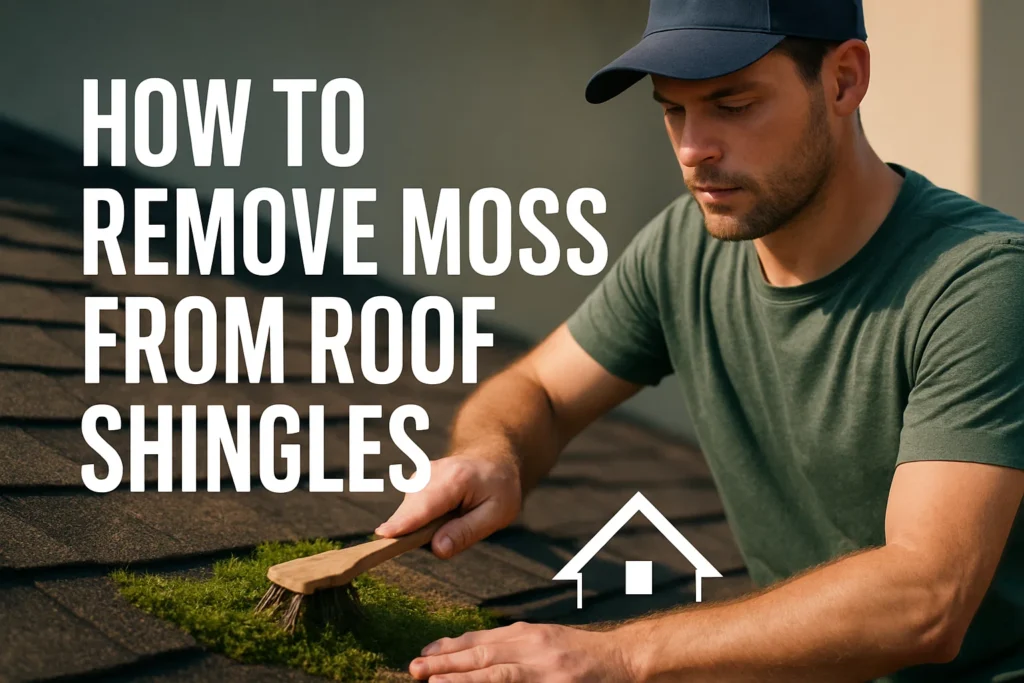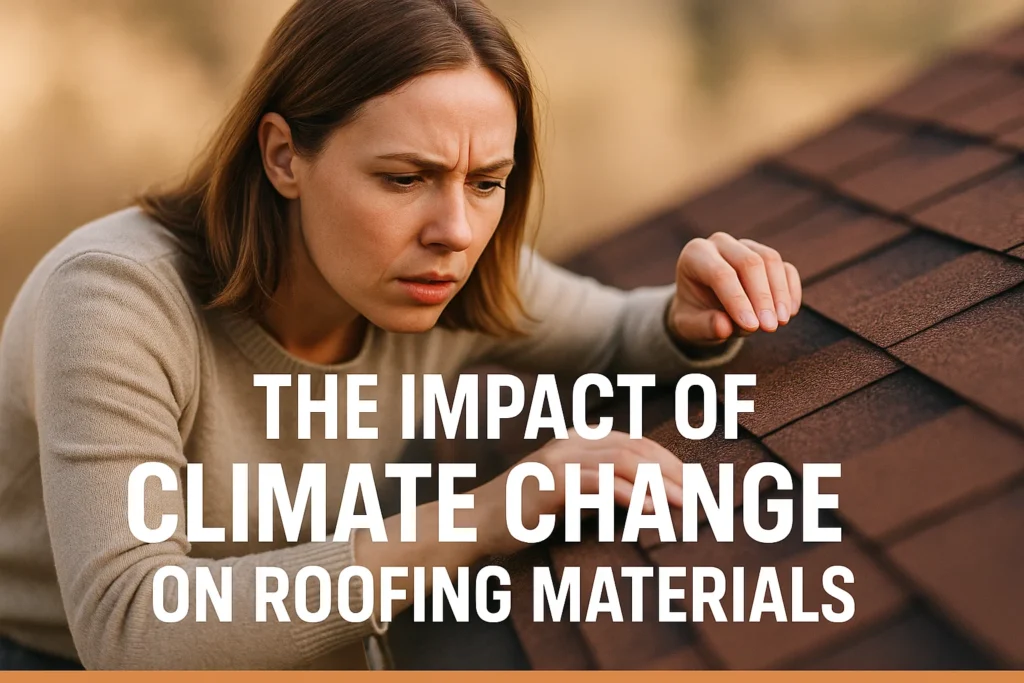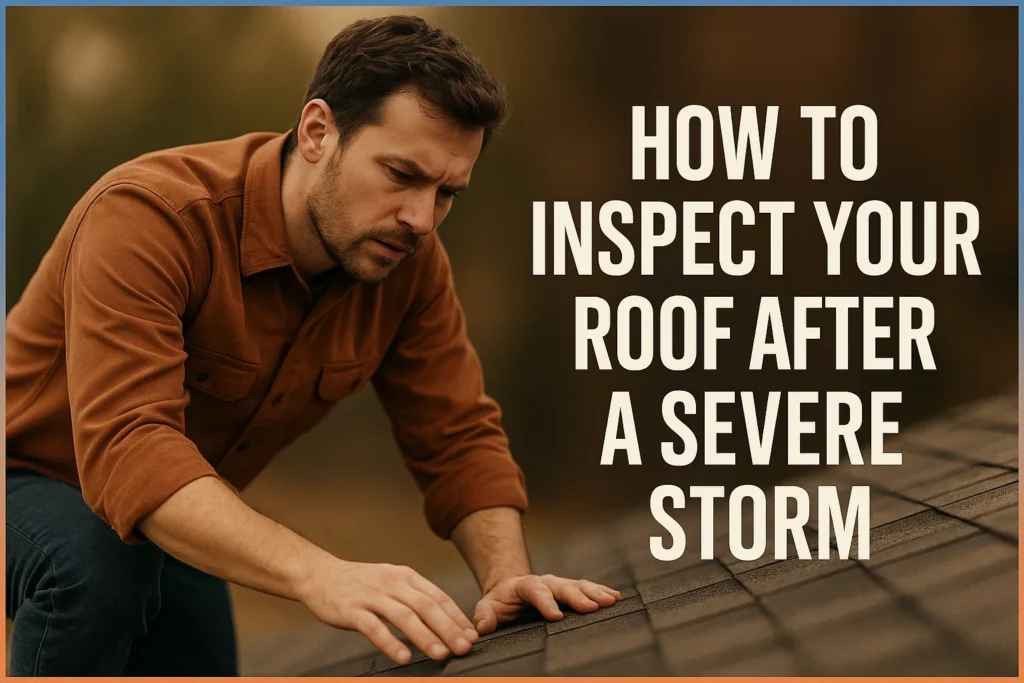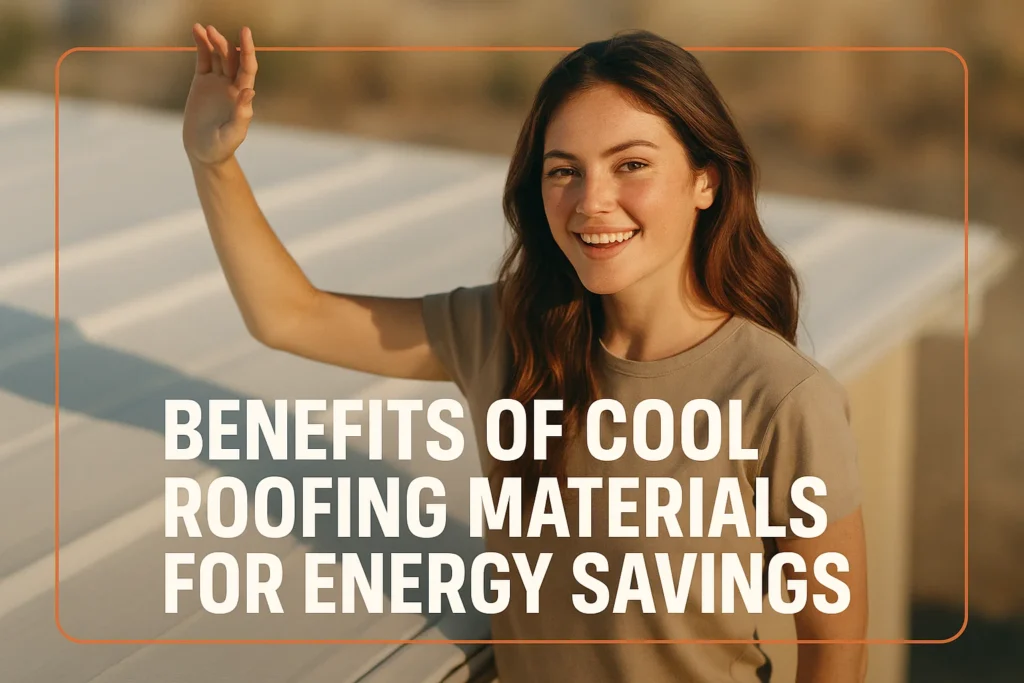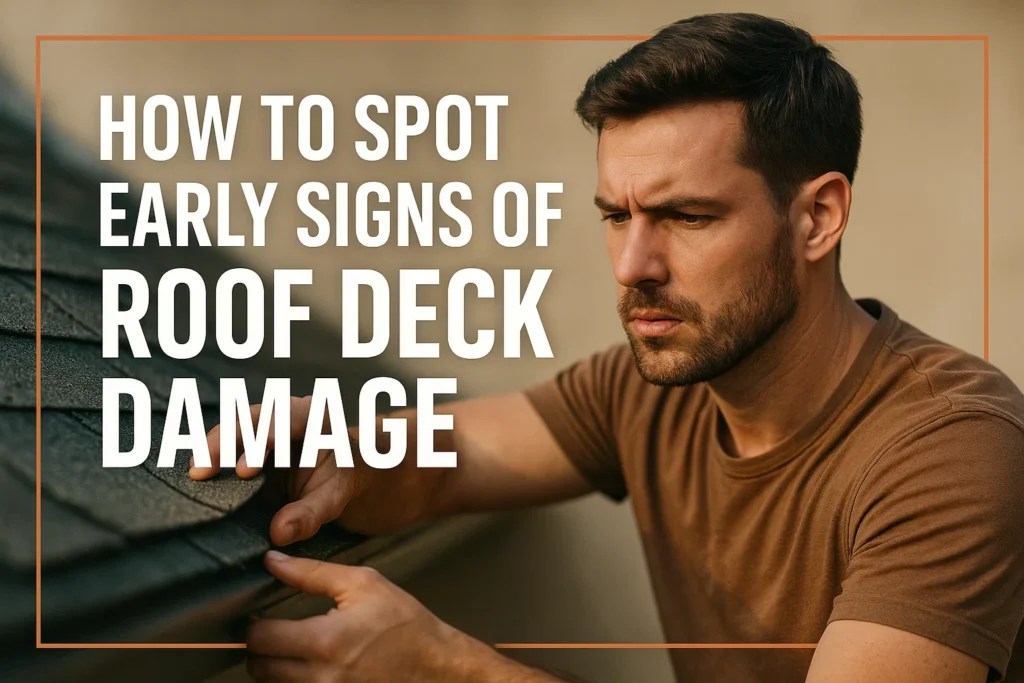Moss on your roof may harm your house. The green fuzzy spots retain water on your roof, which may destroy shingles and lead to leaks. Moss grows and lifts shingles, and allows water to get under them. The later you repair it, the more you will pay. The good news is that the majority of homeowners can eliminate moss without any harm to their property using the appropriate tools and procedures. This guide will teach you how to identify moss before it grows.
Best Methods for Roof Moss Removal
Moss may grow on roof shingles, especially in damp or shady areas. It has the potential to destroy your roof in the long run by lifting shingles and retaining moisture. When moss is removed properly, it will ensure that your roof is maintained and its life is extended.
1. Safety First
- Always use the sturdy ladder and put on non-slippery shoes.
- Consider a safety harness in case your roof is steep or high.
- Avoid walking on weak shingles as this may damage them.
2. Manual Removal Methods
- Soft Brushing: A soft brush or a broom may be used to brush the moss off the shingles. Do not scrub hard, as you may destroy the shingles.
- Garden Hose Rinse: A low-pressure hose can be sprayed on the roof, and the loose moss rinsed off without damaging the shingles.
- Avoid Pressure Washers: Pressure washing may remove or break the shingles.
3. Chemical Treatments (Roof Moss Killer)
- Commercial Moss Killers: There are many commercial moss killers. They are sprayed on the roof where moss is growing and left to act as per the instructions of the product. The majority of them demand that the moss be dead prior to its removal.
- Homemade solutions:
- Mix 1 part white vinegar and 2 parts water and spray the moss.
- Alternatively, a paste of baking soda and water may be applied directly.
- Always wear protective equipment and gloves when handling chemicals.
Is Pressure Washing Safe?
- Hiring professionals who are experienced in soft washing is safer and more effective.
- Moss can be easily washed away by pressure washing, but the high pressure of water may lift or crack the shingles, which will void the warranties or even damage the roof.
- In case of pressure washing, it should be at the lowest setting and at an angle, downwards.
- In most cases, roof cleaning is advised to be done through soft washing (low-pressure water mixed with cleaning agents).
- It is safer and more effective to hire professionals who have experience in soft washing.
How to Remove Moss from Roof Shingles
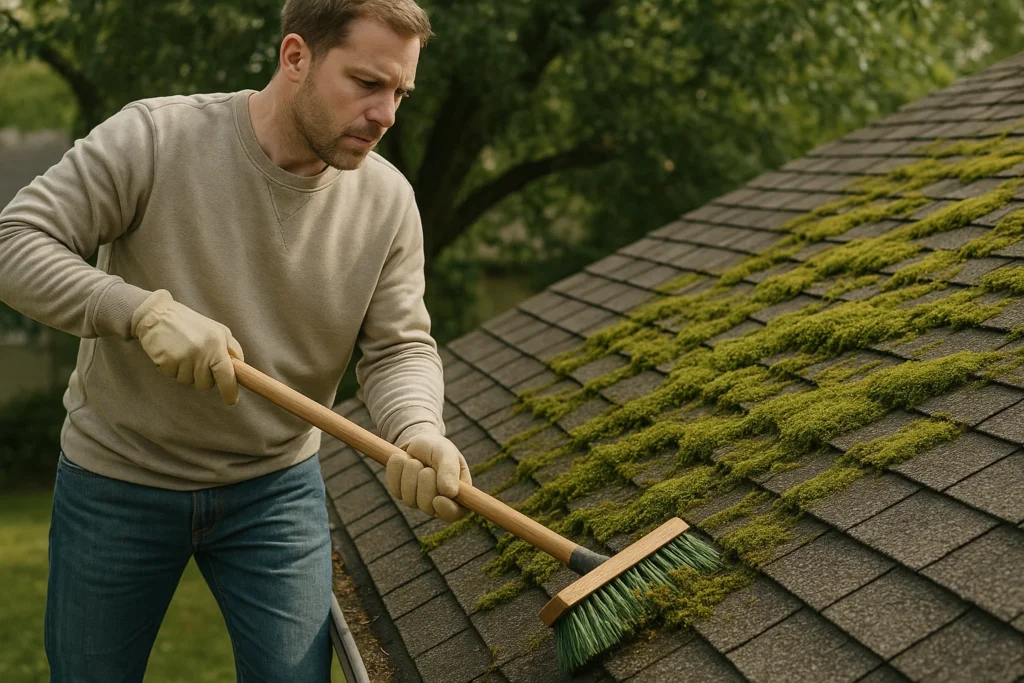
1. Ensure Safety
Stand on a firm surface using a sturdy ladder and wear non-slippery footwear. Take an example of a steep or high-roof safety harness.
2. Moisten the Moss
During cleaning, spray moss with water to loosen and minimize dust and spores.
3. Use Moss Killer
Apply a moss killer or natural moss killer, which is safe to use on a roof evenly, to the affected areas. Leave it on according to the instructions on the product (typically 15-30 minutes to several hours).
4. Manual Scrubbing
Scrub or sweep off moss on the shingles in small sections at a time with a soft-bristle brush or broom.
5. Rinse Roof
Wash off moss and chemical deposits using a garden hose on low pressure.
6. Final Removal
Any persistent moss patches should be lifted or brushed off by hand or soft tool, without harsh scraping.
7. Disposal
Put all the moss you removed in a garbage bag so that the spores do not spread to your yard or your neighbors’ roofs.
Professional Roof Moss Removal
- Professional treatment may be the most suitable solution in case of heavy or persistent moss:
- Professionals use special soft washing methods that clean without destroying roofing materials.
- They tend to apply safe, environmentally friendly chemical treatments that have a long-term effect (up to 2-3 years).
- Pros are careful not to damage your roof, plants, and environment and avoid damage that can be caused by DIY.
- Professional removal typically involves both manual removal of moss and chemical treatment to inhibit regrowth.
DIY vs. Professional Roof Cleaning
| Aspect | DIY Roof Cleaning | Professional Roof Cleaning |
| Effectiveness | Effective for small, light moss infestations | Suitable for large or heavy moss infestations |
| Safety | Requires caution; risk of injury or roof damage | Professionals have safety equipment and training |
| Cleaning Methods | Manual brushing, homemade solutions, basic tools | Soft washing, chemical treatments, specialized equipment |
| Time and Effort | Time-consuming, labor-intensive | Faster and less effort for homeowner |
| Result Durability | May need repeated treatments | Longer-lasting moss control and cleaning |
| Cost | Low cost—mostly cost of materials, typically $20-$100 | Average range $300-$900 or more depending on roof size and method |
| Risk of Roof Damage | Higher if improper methods or tools are used | Lower due to professional expertise and techniques |
| Environmental Impact | Depends on chemicals used; natural solutions safer | Uses eco-friendly commercial products often |
| Preventative Measures | May lack long-term prevention options | Can include preventative treatments like zinc strips |
Prevention Tips
- Put up zinc or copper strips at the edge of the roof. The rainwater will wash along the metal ions down the shingles to prevent moss growth.
- Clean gutters and cut down overhanging tree branches on a regular basis to minimize shade and damp debris on your roof.
- Check your roof twice yearly and remove any moss that is growing early.
- Roof ventilation should be good to ensure surfaces are dry.
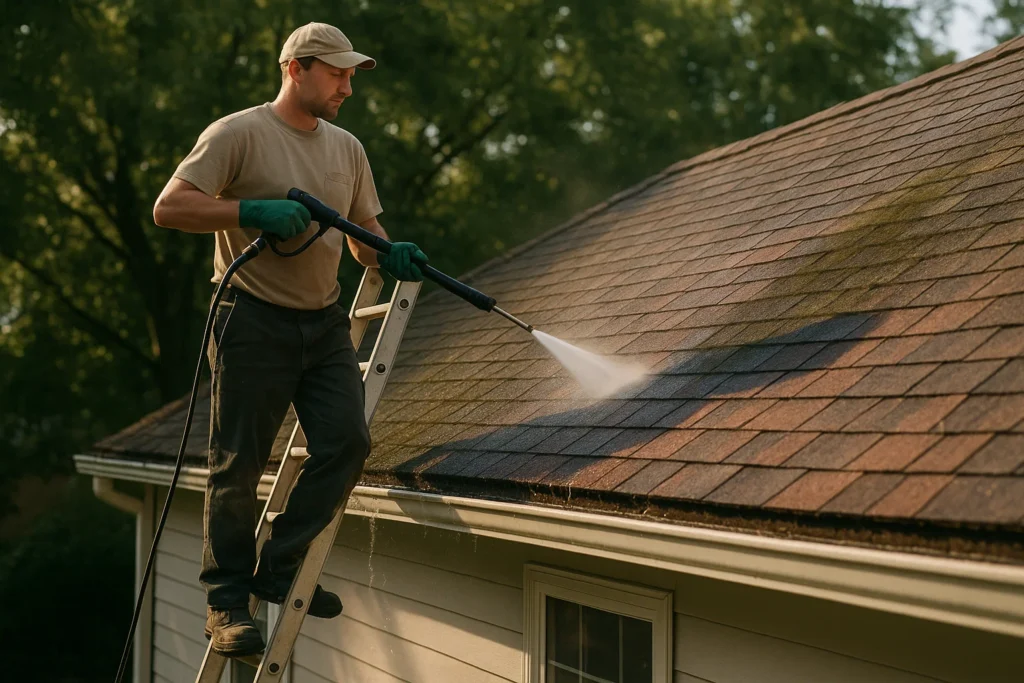
When to Hire a Roof Cleaning Company
There are a number of circumstances under which you should consider calling a roof cleaning professional.
- When moss has spread over vast portions of your roof.
- If your roof is steep, fragile, or hard to reach without risking an accident or damaging the roof.
- In case the moss has not been removed completely after the DIY efforts, or it reappears soon after.
Professionals offer advanced treatment with preventative solutions that provide long-term moss control. Finally, hiring a professional reduces the chances of injury and property damage and ensures that you get professional advice that will be specific to your roof type and condition.
Conclusion
One of the secrets of maintaining a healthy and beautiful roof is cleaning the roof shingles of moss. Light moss can be removed by light manual removal and safe chemicals. However, regular maintenance and preventive care will minimize future moss growth and will save your roof investment in the long term.
FAQs
The pressure washers may lift or crack the shingles. Therefore, low-pressure rinsing is recommended. When a pressure washer is used, ensure that the settings are low and keep the roof at a distance.
One of the most common and successful natural moss killers is one part white vinegar and two parts water. Instead, you may use a baking soda paste.
Clean and inspect moss on your roof at least twice a year or immediately you see growth to avoid damage.
Moss can be re-grown provided that the conditions are favorable (shade, moisture). Regrowth can be minimized by preventative measures such as zinc strips and cleaning.
Yes, light moss, and provided you are careful about safety. When the area is large, the roof is steep, or a persistent moss is involved, it is better and safer to employ a professional.


